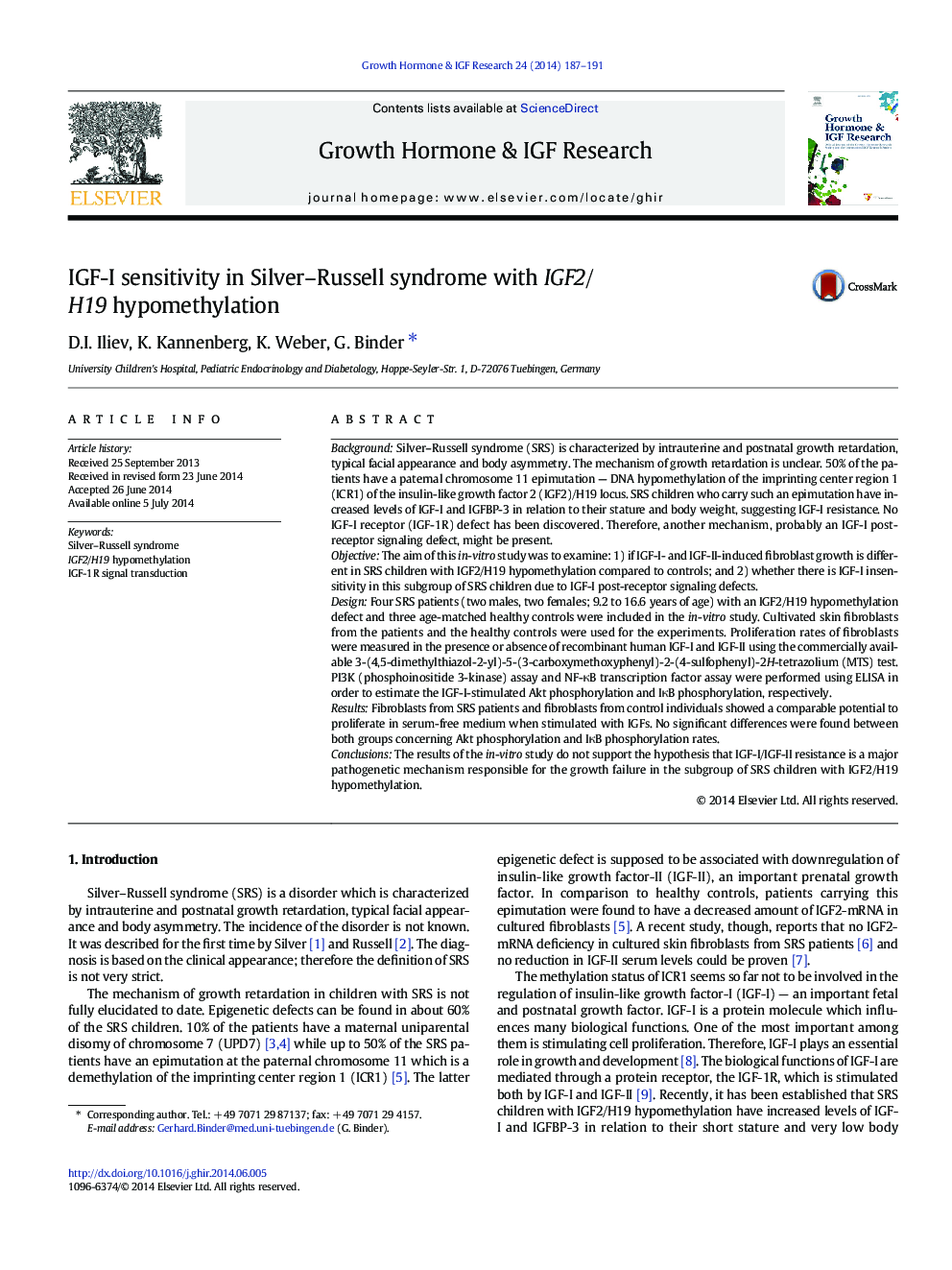| Article ID | Journal | Published Year | Pages | File Type |
|---|---|---|---|---|
| 2802509 | Growth Hormone & IGF Research | 2014 | 5 Pages |
•Relatively high IGF-I serum levels in short children with Silver-Russell syndrome and IGF2/H19 hypomethylation has been interpreted as IGF-I resistance.•Skin fibroblasts from Silver-Russell patients and healthy controls showed a comparable potential to proliferate in serum-free medium when stimulated with IGF-I and IGF-II.•Akt phosphorylation and IκB phosphorylation rates were not different either.•The observed data do not support the above hypothesis.
BackgroundSilver–Russell syndrome (SRS) is characterized by intrauterine and postnatal growth retardation, typical facial appearance and body asymmetry. The mechanism of growth retardation is unclear. 50% of the patients have a paternal chromosome 11 epimutation — DNA hypomethylation of the imprinting center region 1 (ICR1) of the insulin-like growth factor 2 (IGF2)/H19 locus. SRS children who carry such an epimutation have increased levels of IGF-I and IGFBP-3 in relation to their stature and body weight, suggesting IGF-I resistance. No IGF-I receptor (IGF-1R) defect has been discovered. Therefore, another mechanism, probably an IGF-I post-receptor signaling defect, might be present.ObjectiveThe aim of this in-vitro study was to examine: 1) if IGF-I- and IGF-II-induced fibroblast growth is different in SRS children with IGF2/H19 hypomethylation compared to controls; and 2) whether there is IGF-I insensitivity in this subgroup of SRS children due to IGF-I post-receptor signaling defects.DesignFour SRS patients (two males, two females; 9.2 to 16.6 years of age) with an IGF2/H19 hypomethylation defect and three age-matched healthy controls were included in the in-vitro study. Cultivated skin fibroblasts from the patients and the healthy controls were used for the experiments. Proliferation rates of fibroblasts were measured in the presence or absence of recombinant human IGF-I and IGF-II using the commercially available 3-(4,5-dimethylthiazol-2-yl)-5-(3-carboxymethoxyphenyl)-2-(4-sulfophenyl)-2H-tetrazolium (MTS) test. PI3K (phosphoinositide 3-kinase) assay and NF-κB transcription factor assay were performed using ELISA in order to estimate the IGF-I-stimulated Akt phosphorylation and IκB phosphorylation, respectively.ResultsFibroblasts from SRS patients and fibroblasts from control individuals showed a comparable potential to proliferate in serum-free medium when stimulated with IGFs. No significant differences were found between both groups concerning Akt phosphorylation and IκB phosphorylation rates.ConclusionsThe results of the in-vitro study do not support the hypothesis that IGF-I/IGF-II resistance is a major pathogenetic mechanism responsible for the growth failure in the subgroup of SRS children with IGF2/H19 hypomethylation.
